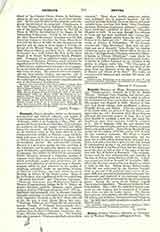

NEUTRA
Neutra (NITRIA; NYITRA), Diocese of (NITRIEN-sis), in Western Hungary, a suffragan of Gran. The exact date of its foundation is unknown. Some attribute the foundation to Fridigit, wife of Rosemund, the Marconian chief, in the middle of the fourth century, but without any more evidence than the alleged foundation by Archbishop Wolf of Lorch. Nor is the see a direct continuation of one which existed in Svatopluk’s time and was suffragan of Prag-Potesover; neither is it probable that the saintly King Stephen founded it. The see was probably founded in the time of King Coloman about 1105-07, although St. Ladislaus had it in contemplation, for a royal document still exists, in which he endows the church at Neutra with much property. The church, dedicated to St. Emmeram, was there in the lifetime of St. Stephen, and is supposed to have been endowed by Queen Gisela. Gervasius was the first bishop (1105-14), and was followed by Nicholas (1133). The successors of St. Ladislaus increased the revenues of the see to which the city of Neutra belonged from the middle of the thirteenth century. The cathedral chapter was in all probability established at the same time as the see; but until the seventeenth century very little is known about it. There were only nine canons in the seventeenth century, but the number was increased to ten in 1780. The see shared the fate of the country, the invasion of the Turks, the Hussites, internal quarrels, all of which wrought much mischief, especially the disastrous battle of Mohacs (1526). The see was in time deprived of its revenues which fell into the hands of the laity. Valentine Toorch first had possession of them, and then later Alexius Thurdó, after which the latter’s brother, Bishop Franz Thurdó, acquired them, but later on became a Protestant. The Reformation found a foothold in Neutra, owing to the sympathy of certain noble families. Bishop Paul Bornemissos tried to restore the financial conditions of the see, but unsuccessfully; during the wars with the Turks the chapter was obliged to flee and only returned to Neutra in 1607. Bishop Franz Forzach was the first bishop to oppose the spread of the Reformation (1596-1607); his work was carried on by his successors, especially by the Jesuits, who since 1645 worked zealously for the reestablishment of the Catholic religion. In the seventeenth and eighteenth centuries religious orders settled in the diocese. The cathedral as it stands today was erected by Ladislaus Erdodyl (1796-36). Among the more famous bishops was August Roskovàny (1859-92), famed as a theo-logian and canonist. Bishop Emmerich Bende has been bishop since 1893; his coadjutor with right of succession is Count William Batthyany. The see includes a part of the counties of Neutra and Trenescen, and is divided into 4 archdeaneries. There are 148 parishes, 237 priests, 194 of whom are parish priests; also 15 religious orders, numbering 145 members, of both sexes. In 1907 the Catholic population numbered 350,398. The cathedral chapter is composed of ten canons, and there are six titular canons, also 3 titular abbots.
A. ÀLDÀSY

